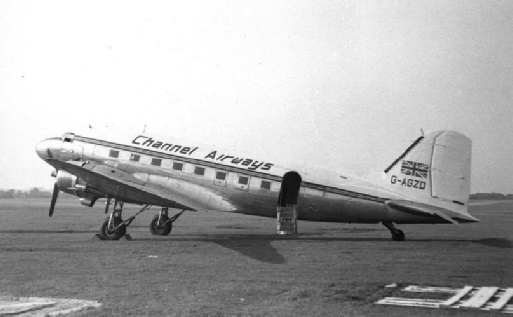NAVIGATION INSTRUMENTS. The plane had a single receiver for use with non directional
beacons. This was working as far as is known, although destroyed in the crash.
It worked by displaying a dial with an indicator that gave the direction towards
towards the radio beacon to which it was tuned. Thus the crew would know the direction
of the beacon but not how far they were from it, although with several different
beacons it was possible to obtain a rough ‘fix’. However it was not a precise instrument
and unreliable at low altitude, especially as the local beacon ( Thorney Island RAF
Station ) was masked by the mass of the Isle of Wight. Additionally the weather
conditions weakened the signal, and thus the NDB system would have been of very little
use in the circumstances. It might even have given a false indication, but the crew
would have been aware of this possibility.

